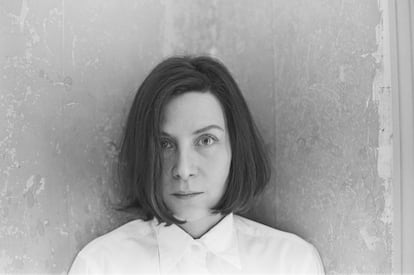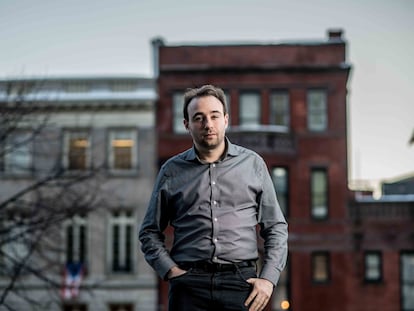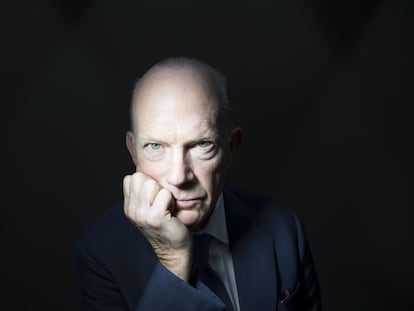‘The Secret History’: Why the quintessential ‘young American snob’s novel’ is trending on TikTok
In 1992, Donna Tartt captivated readers with her book that romanticized classical language studies and old-timey universities. Three decades later, it has become a hashtag

You can’t say that success caught Donna Tartt by surprise. Before her book The Secret History was published in the fall of 1992, the 28-year-old author’s debut novel had generated so much buzz that by the time it hit bookstores, it was a major publishing event. Suddenly, everyone was reading the 550-page novel about six Classics students at an imaginary university, Hampden College, who are involved in a murder.
In the literary world, it was widely known that Tartt received a $450,000 advance (nothing excites the book market like a large figure), but Tartt contributed to the hoopla by crafting an irresistible image of herself. “I have the same measurements as Lolita,” she told a journalist. That is, she weighs 90 pounds and is five feet tall. She dressed like a diminutive androgynous gentleman, wearing Oxford shoes, vests and ties, and her hair was coiffed into a perfect bob (no writer has self-branded any better since Tom Wolfe). Tartt had the aura of a fabulous tale, proving that the stereotype of Southern gentility and old money is not entirely, if at all, true. Tartt’s Mississippi roots permitted her association with Southern authors like Flannery O’Connor, Carson McCullers and Truman Capote.
But in reality, Tartt’s parents raised her in a far more prosaic environment than she implied for decades; her mother was a secretary, and her father, a grocer who rose to prominence in local politics. In the 30 years since the book’s release, the author has managed to maintain her air of mystery. She rarely gives interviews, doesn’t have social media and divides her time living in semi-reclusion between New York (she always stays at the Soho Grand Hotel) and the Virginia home she calls her “dacha.” Moreover, Tartt has only published two other books, The Little Friend (2002) and The Goldfinch (2013), which won the Pulitzer Prize for Fiction in 2014.
When The Secret History was about to be published, there was such a scramble to get ahold of the proof copies that are normally distributed to the press and booksellers that Alfred Knopf, the publisher that won the auction for the coveted manuscript, had to print a second edition before the first one even went on sale. Alan J. Pakula, the director of Klute and Sophie’s Choice, bought the novel’s film rights, but the movie was never made.
@emptybluediner that won’t excuse anything but no lie tsh changed my life #donnatartt#thesecrethistory#thegoldfinch
♬ trash magic live - terrencelovesus 🍒
Michiko Kakutani’s original review of The Secret History in The New York Times presaged what has happened with the novel in the 30 years since it was published. It has become a cult favorite; it is a widely quoted, read and enjoyed book, but not necessarily a text that’s highly respected by those who decide the literary canon. People still debate whether the novel is bad or good, but its many readers are not concerned about that. Kakutani calls the characters “silly” and says the author doesn’t achieve the “moral resonance” of a Dickens or Dostoevsky, but the reviewer concedes that the novel is a real page turner. “As a ferociously well-paced entertainment, however, The Secret History succeeds magnificently,” she wrote.
“I was 14 in the fall of ‘92 when [The Secret History] was published. I stayed up all night and binged on that book. After that, I made all kinds of life decisions based on it. For example, I suffered through four years of Latin in high school, and I would have happily taken Ancient Greek, but they didn’t offer it at my school,” admits Lili Anolik, an American journalist who produced last year’s podcast Once Upon a Time... at Bennington College about the rise of three classmates from the small, expensive college: Bret Easton Ellis, Jonathan Lethem and Tartt. “I also wanted to go to an elite school with an illustrious tradition and a pastoral landscape. And I wanted to have friends who were more sophisticated than I was,” she confesses. According to Anolik, if Brideshead Revisited is the quintessential “young British snob’s novel,” The Secret History is the classic “young American snob’s novel.” The books that pretentious young people really like, she points out, “are never considered intellectually respectable, but intellectuals are almost always wrong.”
Just as the novel dazzled Anolik as a teenager years ago, it is now grabbing the attention of the many readers who’ve come to read it through TikTok. These young people consider The Secret History to be the sacred text of Dark Academia, the social media-encoded aesthetic that flourished during the pandemic and idealizes a very particular, movie-like idea of historical British and Ivy League universities, a pastiche that includes E. M. Forster’s Maurice, the film Dead Poets Society and the Netflix series The Queen’s Gambit. On TikTok, there are thousands of videos related to characters in The Secret History: the enigmatic Cavendish twins; the narrator, Richard Papen; and the doomed Bunny Corcoran. Videos with the #darkacademy hashtag have been viewed three billion times; those labeled #thesecrethistory alone have racked up 183 million views.
@_historiette oh i hate modern architecture with a burning passion #budapest #architecture #budapestrégen #fyp #darkacademia #xyzbca #thenvsnow
♬ original sound - mianne.chan
Elena L. Villalvilla, a 23-year-old journalist, is one of the readers who discovered the book through TikTok; the algorithm recommended Donna Tartt to her as the “queen mother” of the college gothic subgenre. She’s about halfway through the novel, and she loves it: “You know from the start who gets killed and then who the killers are. Then, you think, what’s going to happen if everything is already solved? But, no, almost everything is left [to find out].”
Anolik thinks that the novel’s success 30 years after its publication stems from how immensely readable it is, as well as because the 1980s, when the novel takes place, “seem as remote to these new readers as the jazz age.” But she also believes that the book’s success owes something to Tartt’s own magnetism and proven ability to generate an uncommon fervor in the book world. “She began the novel when she was in college, but at the time her best literary creation was herself. With her half-length bob, well-cut suits, ties and handkerchiefs, she positioned herself as a female version of Sebastian Flyte,” Anolik says. Flyte, the Brideshead Revisited character, was especially vivid in the popular imaginary at the time Tartt burst onto the literary scene; Waugh’s novel had been adapted for the small screen and was appearing on television then.
With several generations of devoted readers and many new fans who are constantly creating content related to the novel on social media, it is all the more striking that the novel has never made it to the big screen. Pakula’s film, the screenplay of which would have been adapted by Joan Didion and John Gregory Dunne, ran aground with the director’s death in 1998. Later, during the golden age of Harvey Weinstein’s studio, Gwyneth Paltrow and her brother Jake announced that they would film The Secret History for Miramax, and that Paltrow herself would play Camilla Cavendish; that project also failed. But according to Lili Anolik, “a film would be unnecessary. The book is already a movie.”
Tu suscripción se está usando en otro dispositivo
¿Quieres añadir otro usuario a tu suscripción?
Si continúas leyendo en este dispositivo, no se podrá leer en el otro.
FlechaTu suscripción se está usando en otro dispositivo y solo puedes acceder a EL PAÍS desde un dispositivo a la vez.
Si quieres compartir tu cuenta, cambia tu suscripción a la modalidad Premium, así podrás añadir otro usuario. Cada uno accederá con su propia cuenta de email, lo que os permitirá personalizar vuestra experiencia en EL PAÍS.
¿Tienes una suscripción de empresa? Accede aquí para contratar más cuentas.
En el caso de no saber quién está usando tu cuenta, te recomendamos cambiar tu contraseña aquí.
Si decides continuar compartiendo tu cuenta, este mensaje se mostrará en tu dispositivo y en el de la otra persona que está usando tu cuenta de forma indefinida, afectando a tu experiencia de lectura. Puedes consultar aquí los términos y condiciones de la suscripción digital.
More information
Últimas noticias
Most viewed
- Sinaloa Cartel war is taking its toll on Los Chapitos
- Oona Chaplin: ‘I told James Cameron that I was living in a treehouse and starting a permaculture project with a friend’
- Reinhard Genzel, Nobel laureate in physics: ‘One-minute videos will never give you the truth’
- Why the price of coffee has skyrocketed: from Brazilian plantations to specialty coffee houses
- Silver prices are going crazy: This is what’s fueling the rally










































